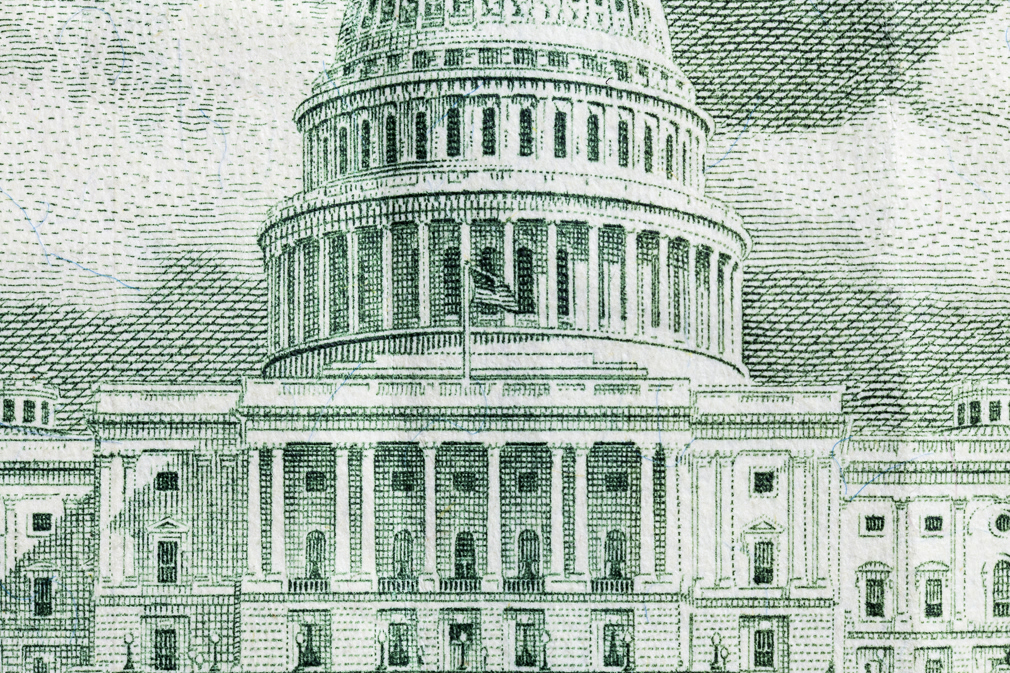The Federal Reserve‘s independence in setting U.S. monetary policy, which impacts the mortgage rates Americans pay, may hang on a single Republican vote.
The Senate Banking Committee Thursday interviewed Christopher Waller, director of research at the Federal Reserve Bank of St. Louis, and Judy Shelton, a former economic adviser to Trump’s presidential campaign, to fill the two seats on the Federal Reserve Board that have been vacant for over a year.
While Waller is non-controversial, Shelton is not. Whether she gets a seat among the group of people who set U.S. monetary policy – influencing mortgage rates – depends on Republicans on the Senate Banking Committee. If there’s one “no” vote, she won’t be confirmed.
Following Thursday’s hearing, three Republican senators – Richard Shelby (R-AL), Patrick Toomey (R-PA) and John Kennedy (R-LA) – said they remained undecided.
Shelton has achieved a rare feat in Washington: She’s brought conservatives and liberals together.
As one example, Ramesh Ponnuru, a senior editor at the conservative magazine National Review and a fellow at the right-leaning American Enterprise Institute, has written several articles urging senators to vote against her.
“Shelton’s prescription for monetary policy has changed so dramatically, and her rationale for it makes so little sense, as to make her appointment to the Fed a gamble,” Ponnuru said in Bloomberg Opinion piece. “Does she believe what she is now saying, or is she just saying what Trump wants to hear?”
Ponnuru is referring to Shelton’s flip-flop from a monetary hawk to a dove. She roundly criticized the Fed for keeping rates near zero during the Obama administration, as the economy struggled to recover from the worst economic contraction since the Great Depression, yet became a booster of low rates when Trump called for deep cuts in 2019.
Shelton has written dozens of books and articles over three decades advocating controversial positions such as a return to the gold standard, a monetary policy abandoned by the U.S. almost five decades ago.
After Trump nominated her in in July, Shelton advocated for policy coordination between the Fed and the White House, which would break a decades-long tradition of Fed independence.
“It would be in keeping with its historical mandate if the Fed were to pursue a more coordinated relationship with both Congress and the president,” she wrote in a Wall Street Journal column on Sept. 16. “When it comes to fulfilling the economic goals authorized by legislative decree, it isn’t seemly for a government agency to be selective.”
Here’s why it matters: an independent central bank is critical to a stable monetary system. If central bankers can be influenced to help the re-election prospects of a U.S. president by loosening monetary policy, it heightens the danger of inflation – which would push up mortgage rates.
Remember mortgage rates topping 18%? It happened the last time a president strong-armed the Fed. Interest rates first broke into double-digits in 1978 and peaked in 1980 at 18.6%, as measured by Freddie Mac.
That 1970s inflationary cycle was sparked by President Richard Nixon successfully pressuring Fed Chairman Arthur Burns to provide him with expansive monetary policy for political purposes.
Nixon won re-election in a landslide. And Americans got stuck with the bill, paying sky-high prices and mortgage rates in an inflationary cycle that lasted for years after Nixon resigned to avoid being impeached.
While Shelton would be just one vote on the Fed board, she would become more influential if she sat at the chair at the end of the table.
Right now, Jerome Powell is Fed chairman until February of 2022. But, Trump made clear last year he believes he has the right to fire Powell.
“I have the right to demote him, and I have the right to fire him,” Trump said in an interview with Reuters in June, among examples.
Can Trump really fire Powell? The short answer is “probably.” The 1913 law establishing the central bank allows the chairman to be fired “for cause,” meaning Trump would have to claim Powell is doing a bad job.
Trump has already done that on Twitter, calling Powell and other board members “boneheads,” “losers,” “naïve,” and an “enemy” of the U.S. with “No ‘guts,’ no sense, no vision!’”
What’s clear is: The law doesn’t say anything that would prevent Trump from demoting Powell and letting him serve the remainder of his term as a less-powerful board member.
Or, Trump could follow a more traditional route – though he’s not typically known for that – and wait to be re-elected before nominating Shelton to succeed Powell in 2022.
Whether at the head of the Fed, or simply as a board member, Shelton seems ready to do Trump’s bidding, unlike Powell and other members of the Fed board.
During Thursday’s hearing, Sen. Sherrod Brown (D-OH), the senior Democrat on the Senate Banking Committee, read sections of articles by Ponnuru, the conservative writer, and Desmond Lachman, another conservative at AEI, in a bid to win over the one Republican vote needed to nix Shelton’s nomination.
“Trump might find in Shelton a useful and pliable Fed governor who will do his low-interest-rate bidding in the run-up to the 2020 election,” Lachman wrote in The Hill. “But it would seem to be highly questionable whether Shelton is qualified to serve effectively and independently on the Federal Reserve’s Board.”






